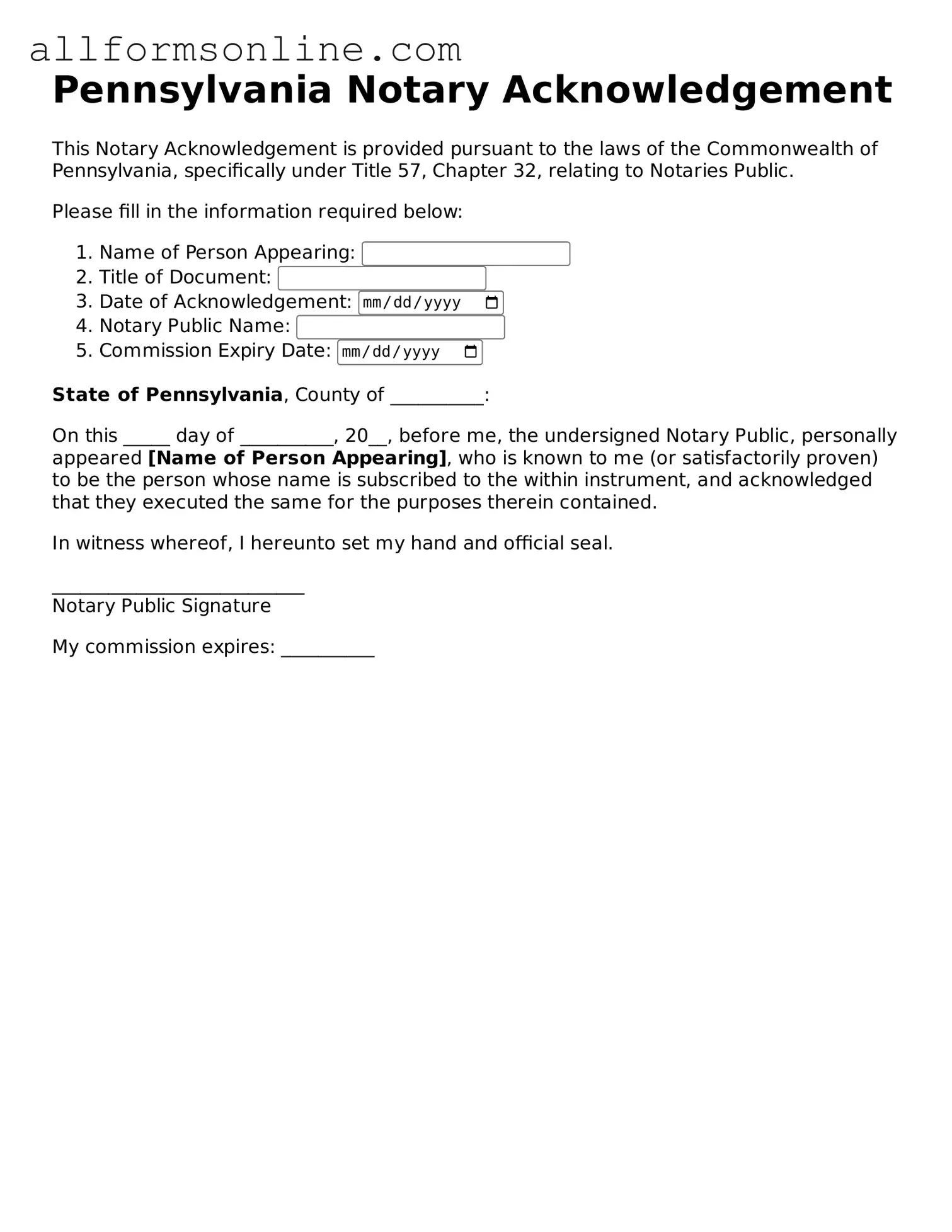What is a Pennsylvania Notary Acknowledgement form?
The Pennsylvania Notary Acknowledgement form is a legal document that verifies the identity of the signer and confirms that they signed a document willingly and without any coercion. This form is often used in various transactions, such as real estate deals or legal filings, to ensure that the signatures on documents are authentic and legally binding.
Who can act as a notary in Pennsylvania?
In Pennsylvania, a notary public must be at least 18 years old, a resident of the state or have a place of employment or practice in Pennsylvania. They must also complete an application process, which includes passing an exam and obtaining a surety bond. Once appointed, a notary can perform various duties, including witnessing signatures and administering oaths.
How do I complete a Notary Acknowledgement form?
To complete a Notary Acknowledgement form, the signer must appear in person before the notary. The notary will verify the signer's identity, typically through a government-issued ID. After confirming the identity and willingness to sign, the notary will fill out the form, including the date, location, and their official seal. The signer must then sign the document in the presence of the notary.
Is a Notary Acknowledgement form necessary for all documents?
No, a Notary Acknowledgement form is not required for every document. However, it is often necessary for documents that require legal verification, such as deeds, powers of attorney, and certain contracts. It's essential to check the specific requirements for the type of document you are dealing with to determine if notarization is necessary.
What happens if a Notary Acknowledgement form is not completed correctly?
If a Notary Acknowledgement form is not completed correctly, it can lead to complications, including the potential rejection of the document by courts or other institutions. Inaccurate information or missing signatures can invalidate the notarization. It’s crucial to ensure that all details are filled out accurately and that the signer is present during the notarization process to avoid these issues.
